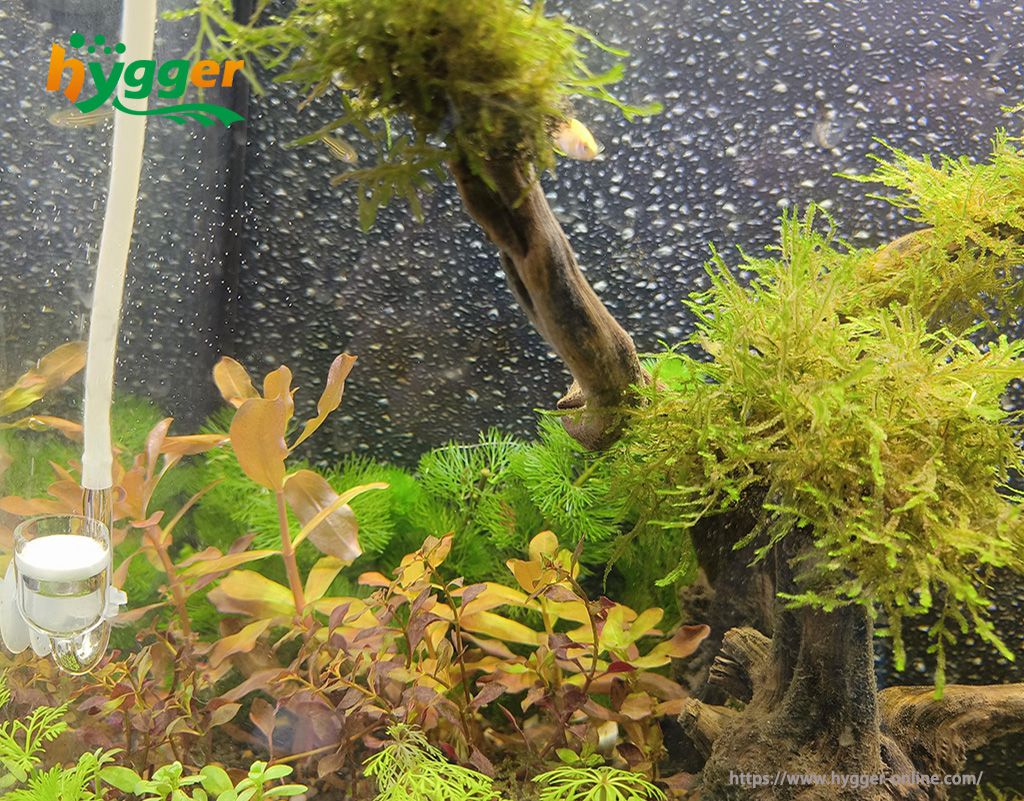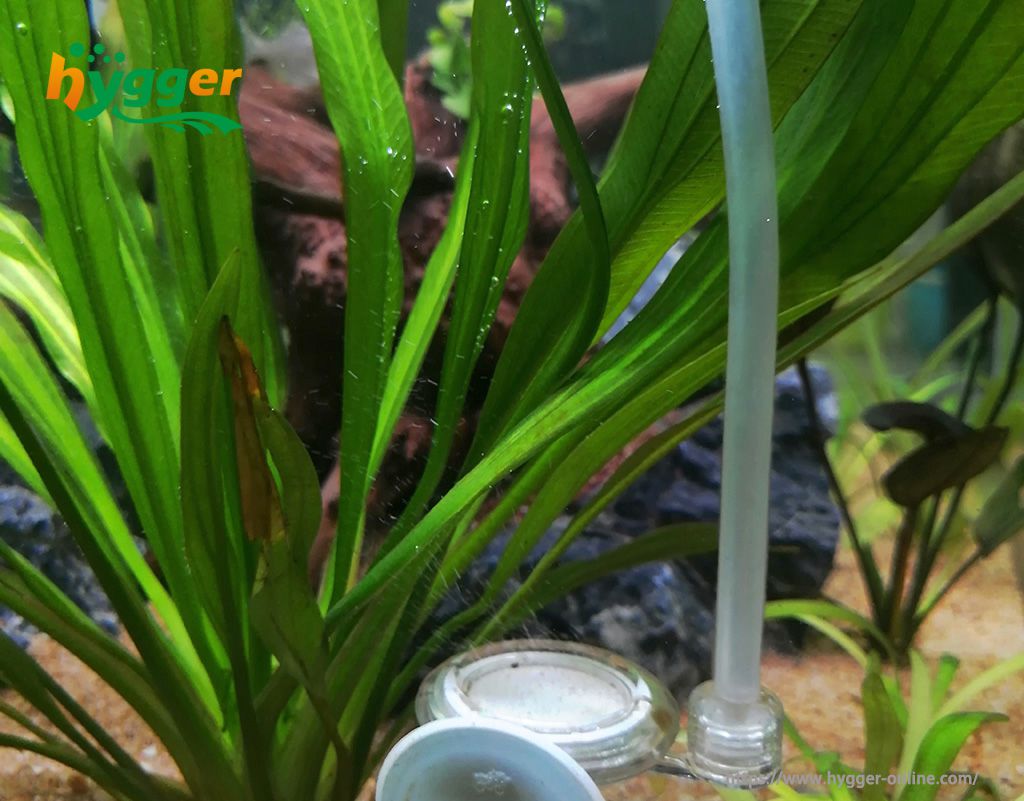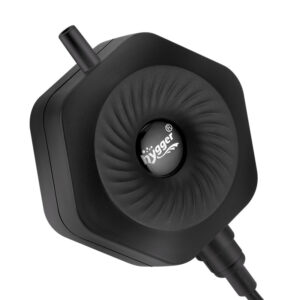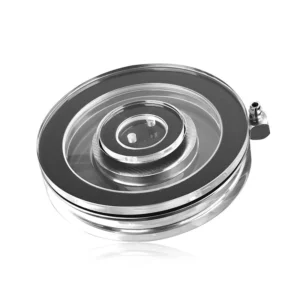Carbon dioxide, abbreviated as CO₂, is the result of breathing. Usually, we take in oxygen and breathe out carbon dioxide. The same goes for fish and aquatic plants. Nonetheless, plants absorb carbon dioxide during photosynthesizing. In this article, let’s learn more about carbon dioxide in aquariums, like the significance, and ways to use or increase the carbon dioxide in aquariums.
Content Table
For What Purpose Use Carbon Dioxide in Aquarium
Carbon dioxide can be used to supplement nutrients for plants, and it is a key part of the photosynthesis process. Plants take in carbon dioxide and water, then produce oxygen in the water. Carbon dioxide injection plus ideal lighting and fertilization are beneficial for plants thriving in tanks. Facing carbon dioxide shortage, plants would appear pale leaves and stems, and grow slowly.
Besides that, carbon dioxide limits algae growth. As we have mentioned, plants can grow well with ideal lighting, fertilization, and carbon dioxide injection. However, if the three factors are imbalanced, algae will take dominance in your tank. However, excessive algae are not good for your fish tank. When your tank suffers carbon dioxide shortage, replenishing it will improve plant growth and limit algae growth.
Also, carbon dioxide can lessen the pH level in your tank. Dissolving the carbon dioxide into the water would form carbonic acid, which would lower the pH level in your tank.
Additionally, excessive carbon dioxide may be damaging to fish health. Provided that your fish prefers acid water, adding carbon dioxide is helpful to decrease the pH level. Nevertheless, too much or too little carbon dioxide is damaging to fish health. And your fish may be sick or suffocate. Luckily, you can deal with it by adding an aquarium air stone or air pump.
How to Increase Carbon Dioxide in an Aquarium
If your aquarium encounters a carbon dioxide shortage, here are some ways to increase the carbon dioxide.
Introducing more new fish
As long as there is adequate room for fish, you can introduce more fish to your tank. Fish release carbon dioxide, which can meet the requirements of some low-light to medium-light plants.

Carbon dioxide liquids
The carbon dioxide is liquid forms. You can deliver the carbon dioxide liquid formulation to plants, rather than carbon dioxide. Nonetheless, it is feasible for small tanks with low light and low carbon dioxide needs. And it requires constant addition and adjustment. In the long term, it is not an excellent way.
Pressurized carbon dioxide bottles
It is effective to use pressurized carbon dioxide bottles. But you need some pieces of additional equipment, such as a valve (adjust the carbon dioxide injection rate), a diffuser (break down the gaseous carbon dioxide into bubbles), and a tube (connect the valve and diffuser). As for carbon dioxide bottles, you can choose one favorite size according to your needs. For example, if you have a large aquarium, a large one is money-saving. But do not forget to get the correct adapter.
How to Use Carbon Dioxide
Plants will consume oxygen and release carbon dioxide at night. Thus, it is not recommended to add carbon dioxide at night. Otherwise, it will cause carbon dioxide intoxication. In general, you can add carbon dioxide one hour after sunrise or light on. Also, the water will turn acid if there is intensive light but a lower carbon dioxide level in your tank. More seriously, the algae will appear and even thrive in your aquarium, while the water quality also turns terrible.
Moreover, you should check the water temperature. Unideal water temperature (too high or too low) will hinder aquatic plants from photosynthesis. Thus, it is better to add an aquarium heater to keep a stable water temperature and promote photosynthesizing. In short, you should consider the time, lighting level, and water temperature before adding carbon dioxide to your aquarium.
Stabilize the PH Value in the Aquarium with Carbon Dioxide
PH value is a measurement of the level of acid or alkali in the aquarium water, which ranges from 0 to 14. A value below 7 means acid, while above 7 refers to alkali. Generally, the pH value would decline as carbon dioxide increases in the water, and vice versa. If there is calcium, potassium, sodium, or other alkalis, carbon acid can be a solution to lower them. Carbon acid is a compound of carbon dioxide and water, which is a neutral acid. Dissolving the carbon acid in the water would change the pH level.

Reminder
In general, the lower the light requirement, the less carbon dioxide is needed. For instance, if your tank has high-light plants. Carbon dioxide injection would be necessary. But excessive carbon dioxide is toxic, which will bring a handful of detriment to your tanks. In general, you should follow “30 ppm for one liter of water”. Then what are the signals of too much carbon dioxide?
- Fish become lethargic
- Lose appetite
- Fish gasp on the water’s surface
- Fish suffocate
- Plants grow slowly
- Algae thrive
- Corals grow slowly
In addition, you should test the pH level regularly. For instance, once a week. An aquarium water test kit is one easy and convenient method to read the results of the pH level. Just dip one touch test strip into the aquarium for 2 seconds and wait for 30 seconds, then you can read the result by comparing the colors of the pads to the color chart.
If there are fish in your planted tank, and you don’t know whether they need carbon dioxide or not, you can go to the topic Do I Need CO2 in A Planted Tank with Fish first.
That is all for today. For more additional ideas about carbon dioxide in aquariums, please feel free to share them in the comment, we’re happy to receive your sharing. Finally, thanks for your reading.


Leave a comment